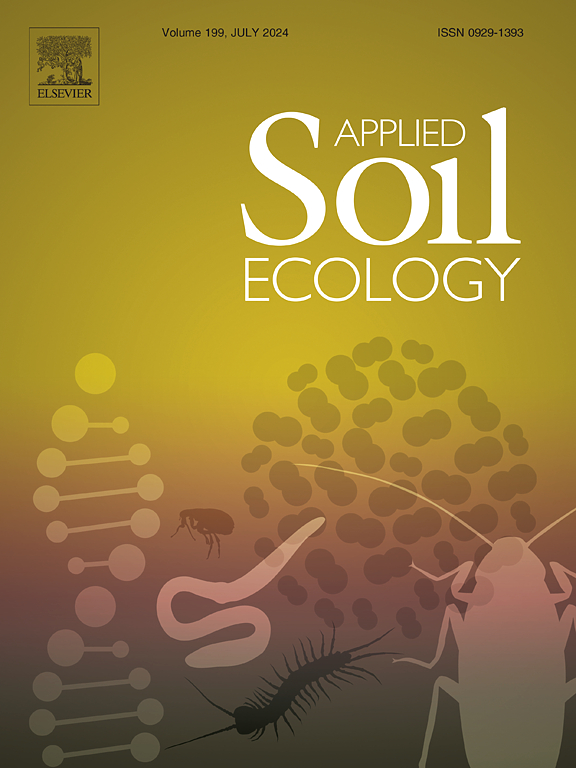Effects of anthropogenic activities on soil microbial community structure and methane anaerobic oxidation rate in coastal wetlands of Yellow River Delta, China
IF 4.8
2区 农林科学
Q1 SOIL SCIENCE
引用次数: 0
Abstract
Anaerobic oxidation of methane (AOM) is widely recognized in wetland soils as an important sink for methane (CH4), a potent greenhouse gas, and an important pathway for CH4 reduction. However, the process of AOM in coastal wetland soil in the context of various anthropogenic impacts and the impacts on microorganisms are not clear due to the intricate interplay among numerous factors in nature and the impacts of anthropogenic activities. Therefore, in this study, laboratory culture methods integrated with molecular biology techniques were used to investigate the rate of AOM in soils of different depths under the influence of several typical anthropogenic activities in the Yellow River Delta, as well as the mechanisms of influence on environmental and microbiological factors. The findings of the study indicated that AOM rates decrease with depth; the effects of various forms of nitrogen (N) on the anaerobic oxidation of soil methane in different soil horizons were inconsistent; and inorganic nitrogen (NH4+, NO2−) was found to affect AOM processes by influencing some of the functional communities (ANME-2d, ANME, and Geobacter), as well as some microorganisms (Euryarchaeota, Methanosarcinales) that indirectly affect the AOM process. Moreover, Geobacter, ANME, and ANME-2d were the key functional microorganisms influencing the AOM process in the anthropogenic samples and served as crucial factors in the AOM process. Therefore, this study could provide data support and a theoretical basis for mitigating global warming.

人为活动对黄河三角洲滨海湿地土壤微生物群落结构和甲烷厌氧氧化速率的影响
甲烷的厌氧氧化(AOM)是湿地土壤中甲烷(CH4)的重要汇,是一种强效的温室气体,也是减少CH4的重要途径。然而,由于自然界众多因素和人类活动的影响相互作用复杂,滨海湿地土壤在各种人为影响下的AOM过程及其对微生物的影响尚不清楚。因此,本研究采用实验室培养与分子生物学技术相结合的方法,研究了黄河三角洲几种典型人为活动对不同深度土壤中AOM的影响,以及对环境和微生物因素的影响机制。研究结果表明,AOM速率随深度的增加而降低;不同形态氮对不同土层甲烷厌氧氧化的影响不一致;无机氮(NH4+、NO2−)通过影响一些功能群落(ANME-2d、ANME和Geobacter)以及一些间接影响AOM过程的微生物(Euryarchaeota、Methanosarcinales)来影响AOM过程。此外,Geobacter、ANME和ANME-2d是影响人工样品AOM过程的关键功能微生物,是AOM过程的关键因素。因此,本研究可为减缓全球变暖提供数据支持和理论依据。
本文章由计算机程序翻译,如有差异,请以英文原文为准。
求助全文
约1分钟内获得全文
求助全文
来源期刊

Applied Soil Ecology
农林科学-土壤科学
CiteScore
9.70
自引率
4.20%
发文量
363
审稿时长
5.3 months
期刊介绍:
Applied Soil Ecology addresses the role of soil organisms and their interactions in relation to: sustainability and productivity, nutrient cycling and other soil processes, the maintenance of soil functions, the impact of human activities on soil ecosystems and bio(techno)logical control of soil-inhabiting pests, diseases and weeds.
 求助内容:
求助内容: 应助结果提醒方式:
应助结果提醒方式:


